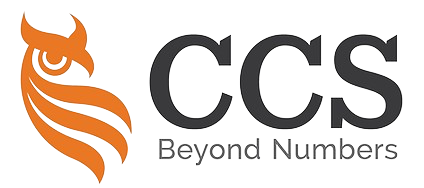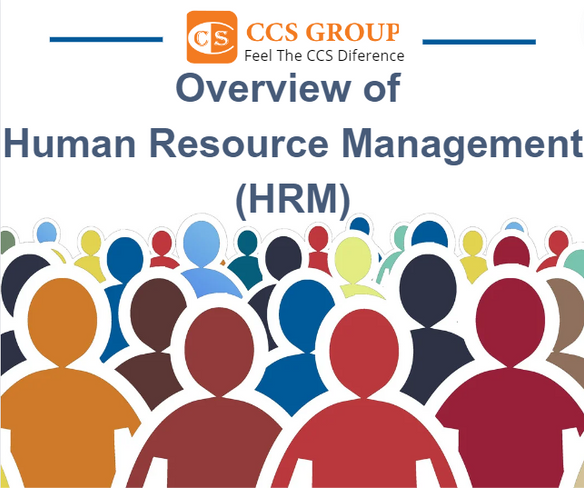Human resource management (HRM) is essential to businesses because it facilitates the efficient management of employees and ensures the achievement of the company’s goals and objectives.
This article will discuss human resource management, how it works, and why it’s important in modern business.
Table of Contents
- HRM: A Brief Overview
- HRM: What It Is and How It Works
- HRM’s Crucial Role
- HRM’s Scope
- HRM’s Key Processes
- Human Resource Planning [Strategy for Managing People]
- HR Manager’s Role
- Staffing Strategies
- Leadership Development and HRM
- Managing Human Resources to Empower Employee
- HRM and Talent Management
- HRM Performance Management
- Effective Hiring Strategies
- Retention Strategies
- Conclusion
1. HRM: A Brief Overview

Human resource management is the practice of planning, organising, and controlling an organisation’s people resources.
It involves a wide range of tasks, including recruitment, hiring, training, remuneration, and development of employees.
Two of the key goals of human resource management (HRM) through the efficient administration of employees are:
- building a strong company culture and
- advancing the organisation’s mission
2. HRM: What It Is and How It Works
HRM is the organised and systematic management of employees to achieve the organisation’s mission, vision, and objectives.
It includes recruiting, hiring, training, remuneration, retaining, and motivating employees.
HRM professionals also devise and enforce policies that ensure employees’ safety, privacy, and well-being.
3. HRM’s Crucial Role

Human resource management (HRM) is essential for businesses since it invests in employees to enhance productivity and promote levels of job satisfaction.
Human resource management emphasises developing a workforce that is both skilled and motivated.
This is done by recognising the importance of human capital.
Its goals are to increase productivity, create a pleasant organisational culture, and safeguard employees from being discriminated against, exposed to dangers, and mistreated.
4. HRM’s Scope
HRM includes many things, such as hiring, performance evaluation, compensation and benefits, training and development, and ensuring they are healthy and safe.
HRM professionals must ensure these areas work well and align with the organisation’s general goals.
5. HRM’s Key Processes
HRM involves several key processes, including:
- Employee Recruitment, Selection and Orientation: Identifying talent gaps, attracting suitable candidates for vacant positions, and introducing new employees to the organisation’s policies, rules, and activities.
- Employee Training and Development: Providing training and development opportunities to enhance employee skills and competency.
- Employee Performance Management: Evaluating and managing employee performance to maintain a competent workforce.
- Employee Retention [Compensation and Benefits Administration]: Implementing strategies to retain valuable employees and enhance job satisfaction.
- Industrial Relations: Industrial relations is the field of human resource management that deals with managing employees in businesses and organisations. The scope of industrial relations includes aspects such as employee relations, labour relations, and Collective bargaining.

6. Human Resource Planning [Strategy for Managing People]

Human Resource Planning is a strategic process that involves forecasting the organisation’s future human resource needs and developing strategies to meet those needs.
It includes analysing the current labour supply, identifying potential labour demand, balancing projected labour demand with supply, and implementing recruitment and training programs to address those gaps.
HRP is an important investment for any business as it allows companies to remain both productive and profitable.
7. HR Manager’s Role

HR Managers are critical in ensuring that management goals and employee expectations align.
They are responsible for managing employee relations, ensuring job satisfaction, and facilitating the fulfilment of both employee and organisational goals.
HR Managers also oversee staffing, payroll, and retention activities within the organisation.
8. Staffing Strategies
Staffing strategies are often confused with recruitment strategies but are different.
Recruiting is a single step in the employment journey; it involves seeking and encouraging prospective candidates to apply for roles.

Staffing strategies are an ongoing process.
It’s not simply filling positions but looking at your workforce to gain insight and design great workforce experiences for your people so that you attract and retain the best.
From this angle, staffing strategies are equivalent to “people strategies.”
Effective staffing strategies are essential for HRM ensuring the organisation has the right talent to achieve its goals and objectives.
These strategies involve defining job requirements, attracting suitable candidates, screening and selecting the best fit, and providing onboarding support to new employees.
These strategies can include various approaches, such as:
- Think ahead: Managers need to have a long-term talent strategy in mind. They should hire individuals with the skills, abilities, and expertise that align with the organisation’s long-term goals.
- Focus on the good traits: Managers should not rely solely on past performance or technical skills when evaluating talent. Soft skills, such as emotional intelligence, drive, and learnability, are becoming increasingly important in the rapidly changing job market. These foundational traits contribute to new skill acquisition and adaptability, particularly in light of advancements in artificial intelligence.
- Hire internally: Before searching for talent outside the organisation, it is valuable to explore internal talent pools. Internal hires often adapt quicker and have lower turnover rates than external hires. Additionally, internal candidates can bring institutional knowledge and familiarity with the organisation’s culture.

9. Leadership Development and HRM
Leadership development refers to organisations’ intentional efforts to enhance individuals’ knowledge, skills, and abilities in leadership roles.
Human resource management (HRM) is crucial in supporting leadership development initiatives.
Some key considerations in this area include:
- Manager involvement in employee development: Through employee training and development, managers can significantly impact the staff retention rate and engagement with the company. Managers can cultivate a culture that values learning and promote the development of their employees by actively participating in the growth of their team members.
- Collaboration between HR and managers: This can be accomplished through conducting surveys, having conversations, and holding feedback sessions on a regular basis. Organisations can regularly construct more efficient training and development programmes if they encourage managerial participation in the planning and execution of training programmes.
10. Managing Human Resources to Empower Employee

Employee empowerment gives employees the authority, autonomy, and resources to make decisions and take ownership of their work.
HRM practices can contribute to employee empowerment in several ways:
- Training and development opportunities: Human resources departments can give employees access to training programmes, workshops, and other resources that can help them improve their skills and knowledge. When employers invest in their employee’s professional development, they enable them to tackle new problems and significantly contribute to the organisation.
- Delegating decision-making authority: Policies and practises about HR can support delegating decision-making authority among personnel working at varying levels. Organisations may develop a sense of empowerment and ownership in their employees by giving them the autonomy to make decisions within the context of their roles.
11. HRM and Talent Management
Talent management refers to the integrated HR processes aimed at attracting, developing, motivating, and retaining high-performing employees.
HRM plays a critical role in implementing effective talent management strategies.
Key aspects of talent management include:
- Recruitment and selection: HR professionals are responsible for developing effective recruitment strategies
- Talent Management and HRM: It involves various operations, including workforce planning, recruitment, onboarding, training and development, performance management, succession planning, and employee engagement. Talent management aims to ensure that an organisation has the appropriate people in the proper positions who possess the right skills to deliver successful business outcomes.
12. HRM Performance Management

Setting performance expectations for employees, monitoring employee performance, providing feedback, and evaluating performance outcomes are all aspects that fall within the purview of performance management, an essential function in HRM.
Its purpose is to accomplish the alignment of individual and team goals with organisational objectives, the identification of areas in need of improvement, and the recognition and reward of strong performers.
Performance management often entails periodic performance reviews, establishing goals and measures, and developing improvement strategies for performance.
13. Effective Hiring Strategies

Employing methods and practices that enable organisations to attract and select the best fit for their job opportunities is essential to effective hiring strategies in human resource management (HRM).
This includes activities such as the analysis and design of jobs, the development of job descriptions and specifications, the creation of effective job advertisements, the sourcing of candidates through various channels (such as online job portals, social media, and employee referrals), the conducting of interviews and assessments, and the making of informed hiring decisions.
Effective hiring methods aim to ensure that the candidate’s abilities, experience, and cultural fit with the organisation are a good match for the organisation’s requirements.
14. Retention Strategies

In human resource management (HRM), retention strategies aim to increase employee happiness, engagement, and loyalty to reduce employee turnover and keep key talent in-house.
These strategies can include creating a positive work environment, providing opportunities for career development and growth, offering competitive compensation and benefits, implementing initiatives to promote work-life balance, recognising and rewarding employees, fostering effective communication and feedback, and promoting a culture of inclusivity and diversity.
The goals of retention strategies are to improve employees’ motivation levels, job satisfaction, and commitment, ultimately leading to higher organisational production and success.
15. Conclusion

Human resource management plays an important part in organisations by supervising various activities, such as talent management, performance management, effective hiring strategies, and retention strategies.
HRM helps an organisation attract, develop, and keep a high-performing workforce that aligns with its goals and drives its success by efficiently managing these functions.
This contributes to HRM’s overall contribution to the success of the organisation.
In conclusion, the overview above summarises the functions and principles of Human Resource Management (HRM). However, it is important to note that the information presented here is a general overview, and more in-depth and specialised insights may be available.

For individuals seeking a deeper understanding of HRM and its specific applications within their organisation, consulting a Human Resource Consultant is recommended.
These consultants specialise in HRM and can provide tailored guidance and expertise to address specific organisational needs.
By seeking the assistance of a Human Resource Consultant, organisations can gain valuable insights and support to manage their human capital and maximise productivity effectively.






